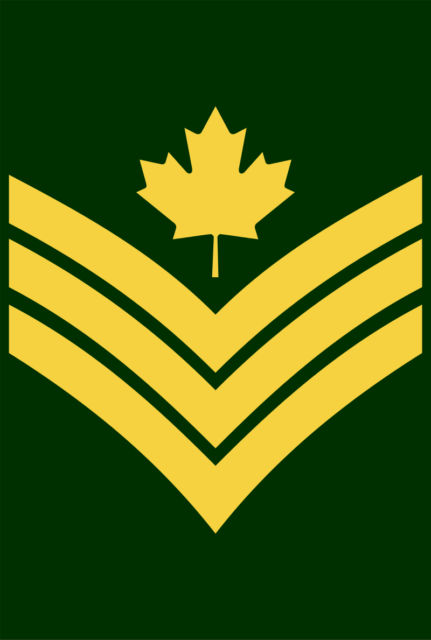All the uninformed structures in the world, including army and police forces, are arranged as hierarchical organizations, dividing its members into ranks. The classification of ranks eases the control over the organization and was first introduced in Ancient Rome by the Roman army.
In modern times, only a few armies have tried to abolish ranks, only to realize that it is impossible to command the forces without ranks and establish them once again. Today, rankings can be very complex, thanks to the complicity and the size of military and police operations. The rank is usually shown on the uniform of the bearer, as certain insignias represent certain ranks.

All these uniform bearers have to obey the higher rank and command the lower. One of the lowest ranks in these organizations, right above the corporal and below the lieutenant, is the sergeant. In most armies, the sergeant is responsible for commanding a small group of soldiers, called a squad.
The sergeant represents a non-commissioned officer, who still hasn’t earned the official document which enlists him in the army officials. Some of the more senior sergeants can earn various titles, like “first sergeant,” “sergeant major,” or “staff sergeant.”
What’s interesting about the term sergeant is the origin of the very word. The term originates from the French word “Sergeant”, which means a “servant, a valet or a court official.” All of these words derive from the Latin term “serviens,” which means “servant or soldier.” The word sergeant appeared in the English language at the end of the 13th century when the French borrowed it, and it referred to military servants who accompanied knights or had the role in enforcing tribunal judgments.

The term often varied, so sergeants could fight as well trained infantry, light cavalry, or be mercenaries, such as the Flemish crossbowmen and spearmen in France. Meanwhile, in England, sergeants-in-arms were the oldest form of royal bodyguards, charged with keeping the king safe, arresting those suspected of treason and collecting loans and taxes. Later, the term sergeant meant a person leading and training the lowest ranked soldiers.
In modern times, the sergeant’s role has developed, and it was adopted by all the major European armies and the U.S. Army as well. The sergeant today represents a non-commissioned officer, taking orders from more experienced soldiers that are given command and leadership responsibilities.

As one of the biggest armies in the world, the U.S. Army included the rank sergeant in 1775, and today it includes different types of sergeants.
The rank is held both by the Marine Corps, and the British Army inherited it.
